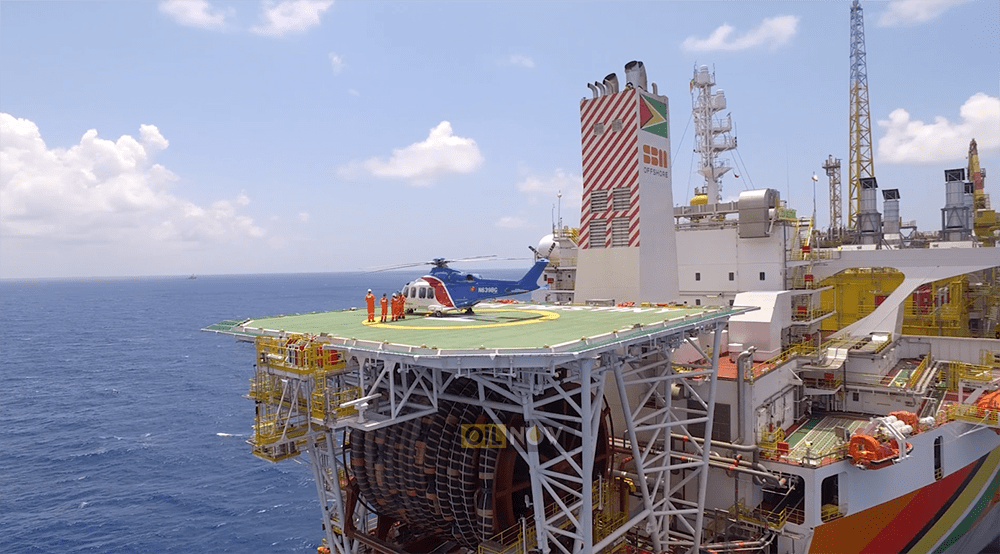Barring unfavourable weather conditions or other factors that could result in a delay, the South American country of Guyana could now be just weeks away from producing its first barrel of oil, thereby ushering in a new era of hope for the nation of just over 750,000 people.
While a December start-up for oil production – ahead of the initial Q1 2020 timeline – remains possible, ExxonMobil has said several factors could impact progress offshore.
“The coming weeks are a critical time period where progress can be impacted by weather and a number of other factors. However, we continue to progress our schedule safely and in a manner that is protective of the environment,” Deedra Moe, ExxonMobil Guyana Senior Director, Public and Government Affairs, told OilNOW in October.
The first phase of oil production at the giant Liza field will mark a significant turning point for Guyanese and provides the country with an unprecedented opportunity to change its fortunes and potentially transition to one of the wealthiest nations in the world.
David L. Goldwyn, President of Goldwyn Global Strategies and former U.S. State Department’s special envoy and coordinator for the Office of International Affairs, says while the coming oil bonanza promises countless opportunities and massive transformations for the country, “it remains to be seen whether Guyana has the infrastructure in place to manage the explosive influx of new petroleum revenue.”
Will it follow the successful examples of Norway or Botswana and avoid the so-called resource curse — or will it fall victim to its own good fortune?
Mr. Goldwyn, a world-renowned energy expert, recently joined the Altamar podcast team of Peter Schechter and Muni Jensen to explain how Guyana could establish the necessary guardrails to combat corruption and transform its revenue streams into newfound prosperity for its citizens.
He expects Guyana’s evolution to be massive — and coming fast, reports digital news service BRINK.
“They’re going to get about $300 million a year. But by 2024, when production ramps up to about 600,000 barrels, it’s going to be $5 billion a year. That’s a big jump. In absolute terms, it’s very significant, probably the biggest find that the industry has had in years, but what really matters is what it means for Guyana,” Mr. Goldwyn said.
The more than 6 billion barrels of oil equivalent discovered in Guyana so far is particularly noteworthy due to the country’s relatively small size, Mr. Goldwyn points out. “On a per capita basis, it’s enormous because Guyana has 800,000 people. Today, they have the per capita income of Tonga, but by 2024, they’ll have the per capita income of Brazil,” a country whose population dwarfs Guyana’s by over 200 million people.
“Many people still do not get how big this is,” former U.S. Ambassador to Guyana Perry Holloway told a reception in the Guyanese capital of Georgetown last November. “Come 2025, [gross domestic product] will go up by 300% to 1,000%. This is gigantic. You will be the richest country in the hemisphere and potentially the richest country in the world.”
So, what does Guyana’s prognosis look like?
According to Mr. Goldwyn, “on the positive side, they have done a lot of their homework. They’ve had eight years of advice on revenue management and resource management from the State Department, enormous help from the World Bank, the International Monetary Fund, the Inter-American Development Bank, NRI (the National Resources Institute).”
He says on the other hand, there is still much to be done.
“Guyana really is a country at risk. … They’ve gotten lots of advice, they’ve thought about a sovereign wealth fund, they’ve thought about a public accountability board, they’ve thought about a petroleum law — but they haven’t implemented it yet. … They’ve got a framework on paper of a system that would provide accountability, but they haven’t implemented it yet,” ne noted.
Verisk Maplecroft, a global risk and strategic consulting firm based in Britain, cautioned the main risks of investing in Guyana are political and social; It is a poor country, with underdeveloped infrastructure and subpar government institutions. Moreover, Guyana is racially divided between blacks and Indians while elections in the past have led to violence and unrest.
But Guyana has every opportunity to get things right. The government has been receiving advice and support from a number of reputable international organisations. Examples for the country of what not to do to avoid the dreaded resource curse are also numerous, with some being close to home such as the unfolding Venezuela debacle.
“We need to train our own scientists, our own engineers, our own geologists to take control of that industry. It is not something we can do overnight, it is going to take time and in the meantime we have got a lot of help particularly from the IDB, Inter-American Development Bank to recruit people to provide advice, do consultancies, and gradually we will build up our legislative capability and organizational capability to deal with this industry,” Guyana’s President, David Granger said on a live radio programme this week in Georgetown.
Ultimately, it is the people of Guyana who will have to ensure that they hold governments accountable in the coming years and that institutions are developed and made to operate in a manner that is transparent and free from political interference.




